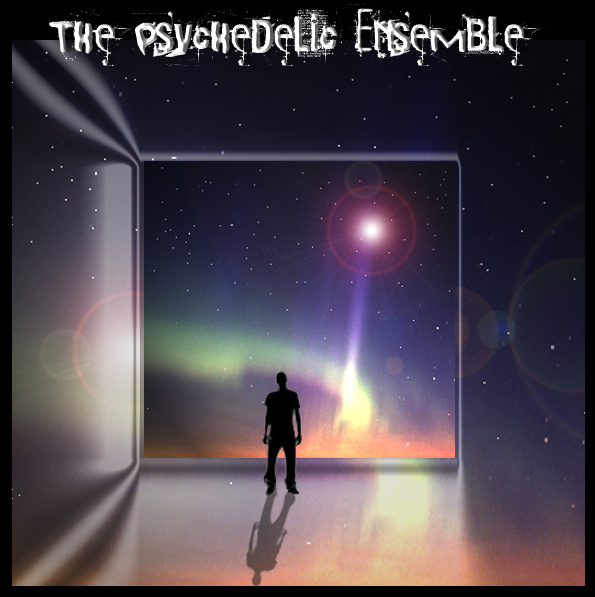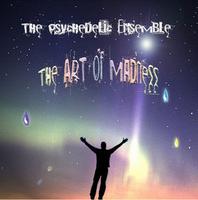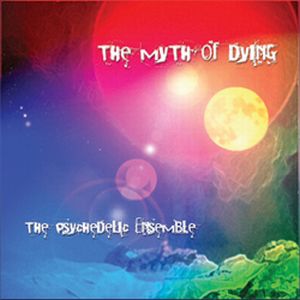The Psychedelic Ensemble
Printed From: Progarchives.com
Category: Progressive Music Lounges
Forum Name: Interviews
Forum Description: Original interviews with Prog artists (which are exclusive to Prog Archives)
URL: http://www.progarchives.com/forum/forum_posts.asp?TID=71321
Printed Date: April 16 2024 at 02:59
Software Version: Web Wiz Forums 11.01 - http://www.webwizforums.com
Topic: The Psychedelic Ensemble
Posted By: toroddfuglesteg
Subject: The Psychedelic Ensemble
Date Posted: September 15 2010 at 08:00
|
The Psychedelic Ensemble is a one man band who chooses to remain anonymous, with the only outside collaboration being with Janos Marton and Alexandra Serban, who together with the artist, carefully selected images produced by artists at the Living Museum as imagery for the album. The project came about some years ago, starting after the artist stumbled on an article in The New York Times about an exhibition featuring art from the Living Museum, a center devoted to artistic production by patients at the Creedmoor Psychiatric Center in Queens, New York. Then in the summer of 2008,an NPR interview with psychiatrist and Living Museum curator, Janos Marton struck a chord that brought about the conception of the opening of The Art of Madness: I think that creativity, and artistic production, is almost a symptom of mental illness. From there the album was written and recorded over 3 months in 2008. I got in touch with the anonymous main man in TPE for the story. ############################################# Your biography has been covered in your ProgArchives profile so let's bypass the biography details. But why did you choose that name and which bands were you influenced by? The "Psychedelic" component of "The Psychedelic Ensemble" derives from my belief--and perhaps I am alone in this belief--that both albums are neo-psychedelic projects. Psychedelia lies more at the core of the concepts of both albums than the musical style. The psychotic experiences of the protagonist in The Art of Madness and the mystical experiences of the protagonist in The Myth of Dying are psychedelic in nature, or so it seems to me. I don't suggest that it is the same kind of Psychedelia one finds in the landmarks of 60s psychedelic music, but the drama of both albums takes as a point of departure the sensibilities of Psychedelia. I suspect purists of psychedelic music will now sink their proverbial teeth in me, but that is how that component of the name came to be. The "Ensemble" component of the name attempts to foil the notion that because the music is performed entirely by a solo musician, the resulting sound will be necessarily small or intimate. Instead, I believe that the sonic result of the production is that of a large group or "ensemble." In discussions about touring with The Art of Madness, we calculated that a minimum of 10 musicians, some of whom would need to play more than one instrument, would be required. That certainly constitutes an ensemble. Also, if one pays attention to the vocals, for example, on both albums I employ different "voices" of different timbres and ranges to suggest multiple musicians. In other words, the sound creates the illusion that at least three or four different singers performed on the records. Compare, for example, the lead vocals on Moon Mad and Despair from The Art of Madness. They are completely different in timbre and style. Regarding my musical influences, they are numerous and varied. I have had a long and successful career as a composer of contemporary concert music--"classical" music, if you will. I write chamber music and orchestral works, which are regularly performed worldwide. Also, after the prog and fusion heyday, I earned a doctorate in composition and studied the musical classics comprehensively. I am strongly influenced by Schoenberg, Stravinsky, Stockhausen, Berio, and others of that musical ilk. Atonality is at the center of what I typically write. But I grew up in the 60s on The Beatles, The Stones, Led Zeppelin, and then in my teens developed an interest in progressive music--Yes, ELP, Jethro Tull, et al. My musical interests later turned to fusion--Return to Forever, the Mahavishnu Orchestra, Weather Report, and others. So my influences are varied. I believe that you can hear faintly all of these musical styles in my work. You have also chosen to stay anonymous and nobody knows your real name. Please explain this choice. It's simple and not at all mysterious: I wanted to release these records without connection to any other work I have done in prog or fusion or classical. These records, The Art and The Myth, are unique in my musical output because I play everything myself. I wanted the records to be released tabula rasa, with a clean slate, so to speak.
Please tell us more about your first album The Art of Madness from 2009 My son, who is an accomplished musician, and I often record cover songs for fun in my home studio. We began fooling around with covering bits and pieces of some early 70s concept albums, but didn't like the results. My son suggested that I write my own concept album, an idea I had been informally kicking around for years. Around the same time, I happened to see an art exhibit while attending a performance in New York. The exhibit featured paintings by artist/patients from the Living Museum, a sanctuary of sorts for artistic production at the Creedmoor Psychiatric Center in Queens. I was blown away by the depth and skill of the works exhibited. Later, and by luck, I heard psychiatrist Janos Marton, who curates the Living Museum at Creedmoor, on a PBS interview assert, "creativity and artistic production is almost a symptom of mental illness." That's a pretty provocative notion, wouldn't you say? At that moment, I found the idea for my concept album and The Art of Madness was begun. I decided to use Marton's provocative statement as the opening idea of the work. Later I coordinated my songs with images painted by the patients, which appear in the CD booklet. As I began work on The Art of Madness, I decided to conceive of the work as a continuous cycle of songs without interruption--a continuous journey, if you will, into madness. I created a few musical motifs that I unraveled in different compositional ways to unify the songs. You hear, for example, the same motives recur in transformed ways throughout the album. This musical transformation process is analogous to the psychological transformations the protagonist endures in the drama. But the work is largely improvised around these musical motives. I would roll the tape and sort of fiddle with the motives' chord progressions, licks, or melodies until I hit the mark. Then I would clean things up and add layers of additional instruments one by one. There was no practicing of parts. In fact, most of the material is played straight to tape. I put aside all of my other work during that time and locked myself in my studio for a solid three months until I completed the writing, recording, mixing, and mastering of the album.
Please tell us more about your second album The Myth of Dying from earlier this year. The Myth of Dying was musically produced in the exact same way. Dramatically it differs though. I have a great interest in literature, particularly literature from earlier centuries. I had been reading some passages from the Tibetan Book of the Dead and was fascinated by the different visions of the afterlife suggested in Eastern and Western philosophy and literature. I began to think of ways of combining these different visions in a concept album. As a model, I turned to 20th-century classical music, where the principle of collage became a focal point for many composers. I then created a story in collage fashion by mixing excerpts from great literature about the afterlife to produce my own vision of eternity. The protagonist in The Myth of Dying is a young poet who has read and loved great literature, poetry, and philosophical and sacred texts. Following his demise, the protagonist enters the afterlife and experiences many of the different ideas he had ardently read about the hereafter. In the afterlife, for example, he visits The Realm of the Skeptics where the great thinkers and agnostics--Hume, Kant, Protagoras, Huxley, and others--hover above ground, circling like a carousel in endless contemplation. The image pokes fun, I guess, at the futility of perpetual thought--which is like the endless circling of the carousel--about matters that cannot be resolved through lofty or erudite contemplation--hence, the floating philosophers. In the end, the protagonist understands that what we believe about the afterlife is what actually happens to us. In the case of the protagonist, he encounters and experiences the visions of the great writers he admired. Musically, the same developmental techniques I described for The Art of Madness are used in The Myth. In addition to the paraphrased text I borrowed from the classics, I also paraphrased or excerpted the 19th-century composer, Niccolo Paganini's violin Caprice 13 (subtitled "The Devil's Laughter") at the end of track 6--The Devil's Lament. Is your ensemble a band or is it yourself with added hired studio musicians? I play and sing all of the music on both albums. One exception is that I don't play violin but I wanted to include that instrument on The Myth of Dying as a musical and age-old connection to the devil whom the protagonist meets. I enlisted a great violinist who is an old and dear friend from the heyday. He is well known and quite accomplished as you can hear on the record. By the way, I gave him the option of citing his name on the record but he said, "I'll stick with The Psychedelic Ensemble's spirit of anonymity." But yes, otherwise I perform all of the music myself--no studio musicians or hired hands on board. How is the creative process for you coming up with a theme/riff/idea to you get it down onto an album? For me, all music begins with some kind of improvisation, whether it be a small idea played on an instrument, heard in one's head, or otherwise. From there, I begin to question what the material is. I analyze the musical idea. I actually ask myself what the musical idea is comprised of harmonically, rhythmically, melodically, and dramatically. I investigate the nature of each of these musical attributes and let my discoveries dictate how I move forward with the musical idea. In other words, I believe that inherent in the smallest musical idea is every bit of information necessary to tell the composer how to continue in an intelligent and musically coherent way. I work out musical ideas differently. Sometimes I "sketch," meaning I write with paper and pencil transformations of my original idea. Some of these sketches I ditch; some I use. At other times, I will investigate the musical idea tactilely, meaning I'll fool with it at the keyboard or on the guitar, investigating its musical possibilities. And finally, sometimes I combine these processes. That is a condensed and perhaps confusing summary of how I work. I could actually show you if we had a short musical idea, a piano, and manuscript paper, but oh well . . . Just to give those of us who are unfamiliar with your music a bit of a reference: How would you describe your music? I would describe my music as a complex mixture of styles but with a personal voice. I think, for instance, of The Myth of Dying that has elements of symphonic prog (Transcendence), fusion (Beyond the Light), classical influences (The Mysterium of the Divine), and so forth. What I am very careful about is ensuring that these somewhat different styles effectively coalesce and don't sound disconnected. What I believe unifies these styles in my work are the musical ideas or motives that migrate from song to song but which are transformed or projected differently. Also scoring or arranging techniques are similar from song to song, harmonic progressions might be the same in a fusion-like track and a subsequent prog-like track. In other words, the styles and songs are unified through recurring musical materials and techniques. And although I might be influenced by Stravinsky, Yes or The Beatles, I believe there is a personal sound that is different from these musicians that permeates all of my work. Also, similar instrumentation and vocals unify the pieces. Both albums are a kind of journey: in The Art, it is a journey of psychological states; in The Myth, it is a journey of mystical states. But the idea of a journey suggests to me different musical styles or terrains. I don't think that the drama of the records would hit the mark I intend if, let's say, only one prog style were employed throughout. One loses the sense of journeying then. Everybody who has reviewed the records gets a little hung up on what the style of my music is. For me, that's good. I'm not interested in being a staunch " such-and-such-prog" kind of musician. I want to explore lots of musical possibilities but I am always careful to unify things. In the end, too, I think there are many musical similarities between prog, fusion, and classical. They are not, at their cores, such different animals really. I think my music is complex, too, more so than initially meets the ear. Yes, there are odd meters and tricky licks but it is complex at the structural level--the form--of the music. Both albums are 58-minute songs conceived on a large scale. There is a lot of polyphony, or counterpoint, too, that makes the music complex, at least from a compositional perspective. For example, Apparition from The Art of Madness is a three-voice canon--a Baroque technique. I don't want to wear complexity on my sleeve as a composer or performer. Instead, complexity is something I hope will be integral to the music and spring from sophisticated and thoughtful development of simple musical ideas--fully integrated, not just complexity for complexity's sake. I dislike so much prog and fusion that forces odd meters and one thinks, "oh, the meter is 13/8, now 7/8, now 3/8"--who cares? Then there are the soloists who play 100-miles-per-hour from beginning to end. It's all like a parlor trick. Who cares unless those meters or speeds derive meaning organically from something in the music--a melodic phrase or shape, a developmental idea, or the like. What is your experience with the music industry and the new internet music scene? I have had just about every possible type of experience in the music industry. I have been a studio musician, engineer, producer, performer, composer, arranger, and even an agent for an early band with which I worked. (Laughs) I wasn't a good agent, just the only one in the band who would agree to accept the task. I'm not boasting about these varied experiences, I'm just a composer and performer, but out of necessity, I've had to do all of these things. The internet-music scene is terrific in most of what it affords musicians. Of course the music piracy stuff is an enormous drag, but the ability to access so much information about new music, especially in forums like this, and readily accessing the music itself, is something we didn't even dream of back in the day. Not to blow your anonymity, but are you involved in any other bands or projects and what is your plans for the rest of this year and next year? At this moment I am not performing. I am under commission to write two classical chamber works, which I have neglected because of my work on the most recent Psychedelic Ensemble album. I need to get back to these commissions or lose a lot of money. There is talk about a third Psychedelic Ensemble album in early 2011 with a number of guest appearances from guys with whom I performed back in the 70s and very early 80s. Each song would include a solo, or cameo if you will, by one of my guests. There are some great players who are interested, but the question is how to get everyone in the same place at the same time for an extended period given the busy schedules everyone still has in the music business. I also have received some requests to produce some young bands, but most of the music doesn't interest me. I might produce one of the projects I liked. We are negotiating now. To wrap up this interview, is there anything you want to add to this interview? Just a word of thanks to those who have taken an interest in the records. As you might glean from the anonymity I self-imposed on these albums, I'm not interested in recognition. I just wanted to write these albums and released them hoping others would find something meaningful and interesting about the music. So far, so good and I appreciate everyone's interest, including yours, Torodd. Thank you to TPE for this interview Their PA profile is http://www.progarchives.com/artist.asp?id=5153 - and their homepage is http://theartofmadness.com/ -
|


